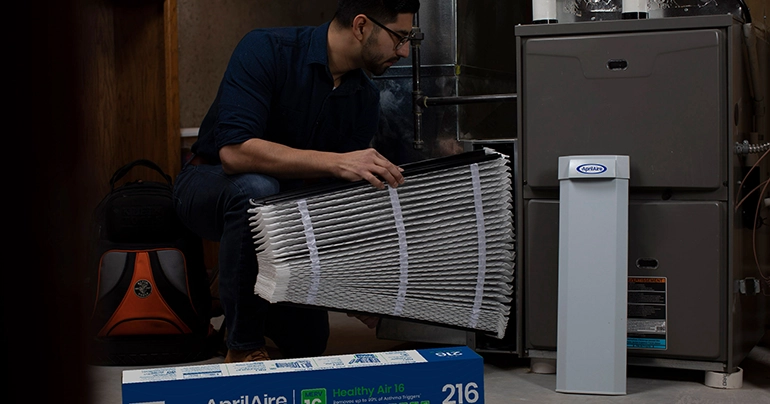What Is MERV Rating on Air Filters? Using a MERV Filter Rating to Shop Replacement Air Filters
2 minute read
The air we breathe greatly impacts our health! In fact, the air inside our own homes is often up to five times more polluted than the air outside. With polluted air impacting our ability to stay focused, get the sleep our bodies need, and our susceptibility to illness, it’s time to care about Healthy Air.
How can you start improving the air inside your home? Filter it with MERV-rated air filters!
What Is MERV Rating on Air Filters?
MERV, or Minimum Efficiency Reporting Value, is a measurement scale used to rate the effectiveness of replacement air filters
According to the National Air Filtration Association, “an air filter’s performance is determined by measuring the particle counts upstream and downstream of the air-cleaning device being tested. A laboratory aerosol generator—much like a paint sprayer—is used to create aerosols of known particle size in the air stream and generate particles covering the required twelve-particle size ranges for testing. That aerosol is then injected into the test duct, and particle counts are taken for each of the size data points.”
Using the data collected, “the filter’s performance, on each of the twelve particle sizes during the six test cycles is determined. For each value, the filtration efficiency is stated as a ratio of the downstream-to-upstream particle count. The lowest values are then used to determine the Composite Minimum Efficiency Curve to avoid the misinterpretation of averaging and provide a ‘worst case’ experience over the entire test.”
By studying how well certain filters trap airborne particles during these tests, they are then assigned a MERV filter rating between 1–16, with MERV 16 being the most effective option.
MERV 16: The Elite MERV Filter Rating
MERV 16 replacement air filters, based on their ranking, are the best at trapping airborne particles to ensure unwanted and harmful contaminants don’t circulate throughout your home.
When AprilAire MERV 16 Air Filters are used in conjunction with an AprilAire Whole-House Air Purifier, your filter can capture 98%* of airborne viruses and remove 99%* of asthma and allergy triggers. Upgrading to MERV 16 when it comes time to buy replacement air filters can help protect homes and families who suffer from asthma attacks, allergy symptoms, and other respiratory concerns.
Be sure to speak with your local Healthy Air Professional to confirm what’s right for your system or check out the inside of your air purifier cabinet door for all compatible filter models!
Without proper filtration, dangerous home and health threats can linger in your air for hours, enter your HVAC system’s ducts, and make others in your home more susceptible to illness. By capturing airborne dust, AprilAire Replacement Air Filters also prevent dust buildup inside your HVAC system’s cooling coils, which over time, can help you save energy and money. Change your AprilAire Air Filter regularly per packaging direction to ensure optimal performance.
*Contaminants removed based on air passing through the filtering system.


